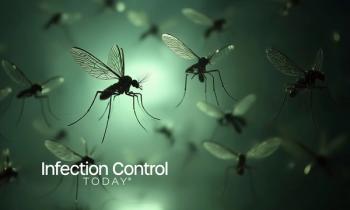
- Infection Control Today, October 2022, (Vol. 26, No. 8)
- Volume 26
- Issue 8
Birx: Every New Infection, Loss Should be Considered a Failure of US Medical Infrastructure
Ambassador Deborah Birx said in an exclusive interview with ICT® that there are “extraordinary structural barriers in the US to access” medical care. Individuals may have insurance, but they cannot access care.
To better prepare for future COVID-19 variants and other pandemics, the United States needs to better take care of the medical provider infrastructure—and that includes making sure that rural and tribal areas have access to medical care as well.
Ambassador Deborah Birx, MD, will be presenting about this topic, titled, “COVID-19 USA - Lessons and new tools to improve workplace safety “ as a guest speaker
Birx is a world-renowned medical expert and leader whose long career has focused on clinical and basic immunology, infectious disease, pandemic preparedness, vaccine research, and global health. Birx also served as a US Army Colonel and later, running some of the most high-profile and influential programs at the US Centers for Disease Control and Prevention (CDC) and US Department of State.
Recently, she sat down with Infection Control Today® (ICT®) to discuss her presentation, COVID-19, medical infrastructure, and monkeypox, Langya Virus, among other topics.
“There's extraordinary structural barriers in the United States to access. We've spent a lot of time working on insurance schemes and ensuring people have insurance,” Birx said in the exclusive interview. “But we didn't stop to look, [to see if] they have insurance, how are they going to access care? And, clearly, for 20% of Americans, there is no access to primary care. There is no access to community health workers or compute brick and mortar clinics."
Birx continued, "And those [problems] have to be addressed if we're going to be successful both in controlling the current pandemic as well as future infectious disease pandemics, as well as our pandemics of obesity, opioid use, hypertension, and diabetes; these are all achievable. But we have to use the data, community dollars and health care workers together to make a change.”
Another way to correct the issues that the US has in the medical infrastructure is how those individuals in the medical community look at patient infection and loss. "Currently, if we treated every hospitalization and death as a programmatic failure, we would fix those issues, and we would change them," Birx said. "That's how we dealt with human immunodeficiency virus, tuberculosis, and malaria at the community level. We looked at every new infection and every loss from any of those infections disease is a failure of our programming."
This is the first installment of 4 of this exclusive interview.
Articles in this issue
about 3 years ago
Product Locator: October 2022about 3 years ago
Preventing Influenza in the Health Care Settingabout 3 years ago
The 3 C’s: Communicationabout 3 years ago
Bug of the Month: Watch Your Cat for Me!over 3 years ago
Monkeypox: Birx Says We Are Not Ready for a New PandemicNewsletter
Stay prepared and protected with Infection Control Today's newsletter, delivering essential updates, best practices, and expert insights for infection preventionists.




